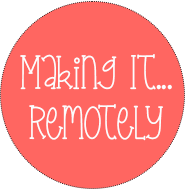An elevator pitch is a quick 30 second summary or introduction of you and your products and services.
Having one and using it at an appropriate time can be your number one asset when it comes to getting more business and making great connections.
Using this elevator pitch strategically and pairing it with your branding, can go a long way to cement your company in the minds of new and potential customers, and potential partners helping them understand who you are, what you do, and how you can help them.
It doesn't always result in an immediate benefit, but you should be prepared for any scenario in which you could be giving an elevator pitch.
In reality, most people have given an elevator pitch at some point in their business or career activities.
How to Write a 30 Second Elevator Pitch and Why You Need One
There are actually many different types of pitches—from interviews to new business opportunities. And that makes preparing for your next pitch an important step in marketing both yourself and your company.
When it comes to figuring out who to deliver your pitch to, you should aim for the best point of contact, not just the highest point of contact. Choosing connections that are related to or interested in what you’re offering will give you a better chance of making your sale.
The Introduction
This can be as simple as your name and the name of your company. An example: I'm (your name) and I'm with (your company's name) and it's great to be with you today!
It's important to greet your audience in a way that’s appropriate for the occasion. For example, use a formal approach for a business pitch or more casual for a fun event and get creative with your introductions over video chat.
The Problem
You started your business to solve problems for your customers. Whatever your business is trying to solve, it’s important to get the point across early on in your elevator pitch to set the theme for the rest of your speech. And you want to keep it really brief.
An example: Our company helps families save money by eliminating the cost of daycare, giving them more quality time with their family.
Even if your business solves a number of problems, you'll want to focus your audience on your overall solution. Something that helps customers accomplish a goal, or solve a really pressing, show stopping problem.
If possible, relate the problem back to your audience by using real-world examples. This will help make the problem more relevant and, hopefully, grab your audience’s attention.
The Solution
If the problem is what draws the audience in, then the solution is what hooks them. This is your time to show them why they need your help.
Here’s an example: We help busy moms and dads create products and platforms that give them the freedom to work from home (or any location), earning income while they do other things.
The solution is the most important part of an elevator pitch, so spend time perfecting it. It’s always better to personalize your pitch. So don’t be afraid to tweak it to fit your audience.
Your Unique Value Proposition
Now that you have your audience’s attention, it’s time to seal the deal. This is where you explain why your solution is better than anyone else's. An example value proposition is: We don't just offer a one size fits all solution. We tailor our packages to fit the needs of our audience with tiered solutions and one on one coaching designed to fit most budgets.
The value proposition differs from the solution by focusing on why your audience should use your solution over a competitor’s. If you don’t have that answer just yet, perform a competitive analysis to compare your offerings or look to your executive summary.
Call to Action
While most of the hard work is done, it’s important to close out your pitch with a call to action. You can also compliment your audience before you part ways and thank them for their time. Always err on the side of being genuine rather than delivering a scripted goodbye.
With an online business your call to action could be to ask your audience to visit a branded link that takes them to a free resources, like visit (your branded linkURL) to recieve (name of your free resource) for more information. Your branded link should provide the free resource in exchange for the visitor's email address to help you build your list.
An example: Join the growing number of families who are saving money while spending more time with the people who matter most. Visit (branded link) to learn how to lose the commute and earn passive income from home (or any location)!
There is no right or wrong way to engage your audience. While ending with a question can create a dialogue between you and your audience, a genuine compliment can go a long way. Think about what made you want to pitch them in the first place and use that to end the conversation. Lastly, don’t forget to swap contact information, such as a business card, if you don’t already have it
Creating Your 30 Second Elevator Pitch
Here are the simple steps you can take to create an elevator pitch for your business.
Wrapping It Up
A 30 second elevator pitch can be used for other purposes when creating content for your business. Think about using it when creating videos, branding, social media and podcasts to attract people who are interested in your products and services.
Subscribe to Our YouTube Channel
We're helping creative business owners go from stuck and confused to empowered and thriving one video at a time.


